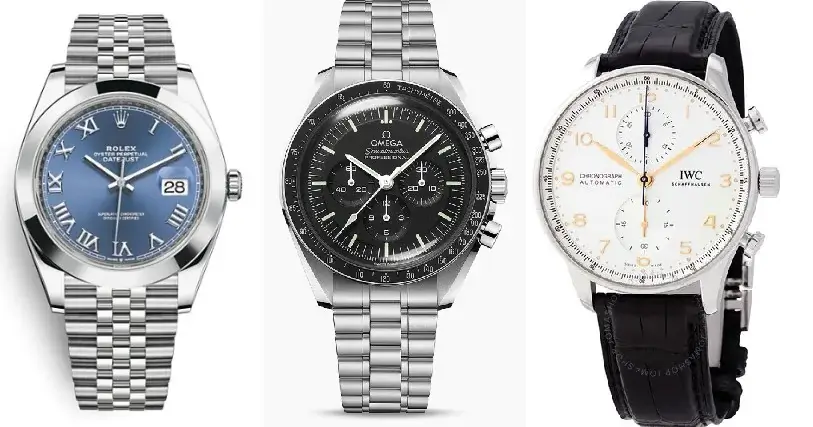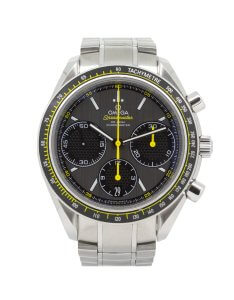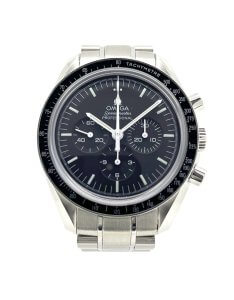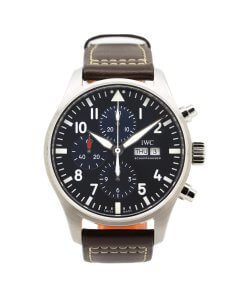The History of Luxury Watches: Stories Behind Famous Brands

The history of luxury watches is a remarkable story that features groundbreaking innovations that have transformed timekeeping. Queen Elizabeth I received a jeweled “arm watch” as a New Year’s gift in 1571, and this marked the beginning of an amazing journey. Blancpain, 288 years old, stands as the world’s oldest luxury watch brand.
These engineering masterpieces have redefined precision and craftsmanship through the centuries. Rolex achieved a significant milestone in 1910 when Switzerland’s Bureau Officiel awarded their wristwatch the world’s first Official Chronometer Certification. The company made history again in 1926 by creating the “Oyster,” the first waterproof wristwatch. Luxury watch brands showcase more than technological progress. Their fascinating brand identities shine through iconic elements like the distinctive omega watch logo and Rolex’s revolutionary “Perpetual Rotor” self-winding mechanism from 1931.
This piece takes you deeper than the polished exteriors of famous timepieces to reveal the secret stories behind legendary brands. The sort of thing I love about these prestigious watches goes beyond their price history. You’ll discover how visionary founders, royal connections, and bold innovations shaped today’s luxury watches. The stories range from IWC’s trusted relationship with pilots to Omega’s remarkable journey into space exploration.
The Untold Origins of Rolex
The Wilsdorf vision and early struggles
Hans Wilsdorf solidifies himself in this history of luxury watches. Wilsdorf was a German entrepreneur, believed that “only great marketing is needed to make a company successful”. He started a London-based timepiece distribution company in 1905 when he was just 24 years old. People ridiculed wristwatches back then and thought pocket watches were more reliable. Wilsdorf stayed convinced that wristwatches would shape watchmaking’s future.
He picked the name “Rolex” in 1908 because people could easily pronounce it in any language, and it fit perfectly on watch faces. He also thought the name sounded like a watch being wound. His company grew quickly and had over 40 employees by 1914.
How the Oyster case changed waterproofing forever
The game-changing moment came in 1926 when Wilsdorf created the Oyster case – the world’s first waterproof wristwatch. This state-of-the-art design had a patented system where the bezel, case back, and winding crown screwed down against the middle case to create a sealed environment.
Rolex had tried the “Submarine” watch in 1922, but it didn’t work well because users had to open an outer case daily for winding. Nature inspired the Oyster name – just like the sea creature, this watch could “remain an unlimited time underwater without detriment to its parts”.
Mercedes Gleitze and the English Channel stunt
Wilsdorf proved the Oyster’s power by giving his waterproof watch to British swimmer Mercedes Gleitze during her English Channel crossing in 1927. The Oyster worked perfectly even after spending over 10 hours in cold waters. Rolex celebrated this soaring win with a front-page advertisement in the Daily Mail that declared “The Wonder Watch That Defies the Elements”. This brilliant move made Gleitze the first brand ambassador that ever spread across history.
The secret behind Rolex’s chronometer certification
Rolex built its precision reputation early. The company earned the world’s first Swiss Certificate of Chronometric Precision for a wristwatch in 1910. A Rolex wristwatch received a Class A certificate from Kew Observatory in 1914 – a difference previously given only to marine chronometers. Almost every Rolex since 1951 has earned chronometer certification. The company started using the term “superlative” on their dials from 1957, that indicates these timepieces performed better than standard chronometer requirements.
Omega’s Hidden Legacy in Space and Sport
Rolex led the way in waterproof innovation, but Omega blazed its own trail in luxury watch history. This Swiss manufacturer, established in 1848, would later become known for precision timekeeping in the most challenging environments on Earth and beyond.
The Omega watch logo and its symbolism
The iconic Omega watch logo showcases the Greek alphabet’s final letter, which represents ultimate accomplishment and perfection. The company’s founder, Louis Brandt, picked this symbol in 1894 to showcase the outstanding quality of their 19-ligne caliber. Omega’s name reflects completion and excellence, showing the brand’s steadfast dedication to watchmaking mastery. The logo has managed to keep its distinctive Greek letter while updating its style. Today, it stands as one of luxury watch industry’s most recognizable symbols.
Why NASA chose the Speedmaster over others
NASA put watches from different manufacturers through extreme tests in 1965 for their Gemini and Apollo missions. The Omega Speedmaster Professional beat out competitors like Rolex, Longines, and Hamilton. These rigorous tests pushed the watches through temperature extremes from -18°C to 93°C, vacuum conditions, humidity challenges, and shock resistance tests. The Speedmaster earned its place in history as the first watch on the moon during Apollo 11 in 1969, worn by Buzz Aldrin during his moonwalk. The watch later proved crucial during Apollo 13, helping astronauts time critical engine burns that guided them safely back to Earth.
The Olympic connection few know about
Omega’s Olympic journey started at the 1932 Los Angeles Games, where they served as official timekeeper with just 30 chronographs. Their timekeeping technology saw dramatic progress—from basic sto pwatches to electronic systems that measure to the millionth of a second. The brand introduced the first photofinish camera in 1949, which changed Olympic timing forever. Omega has timed 29 Olympics and developed specialized equipment for each sport while managing to keep their luxury watch price hierarchy alongside their technical advances.
pwatches to electronic systems that measure to the millionth of a second. The brand introduced the first photofinish camera in 1949, which changed Olympic timing forever. Omega has timed 29 Olympics and developed specialized equipment for each sport while managing to keep their luxury watch price hierarchy alongside their technical advances.
IWC and the Military Connection
Luxury watch history features few brands with such deep military roots as International Watch Company. This Swiss manufacturer’s connection to military aviation marks a unique chapter in the development of precision timepieces.
How IWC became a favorite of the RAF
British Royal Air Force’s relationship with IWC started in 1948 with a commission for specialized timepieces that met strict military specifications. The RAF needed extraordinary precision for navigation and immunity from cockpit magnetism, unlike earlier military watches. Reliable timepieces proved crucial for pilots who faced extreme conditions during World War II.
The Mark XI and its secret specs
IWC’s Mark XI showcased groundbreaking anti-magnetic properties through its soft iron inner cage that protected the movement from magnetic interference. The timepiece used IWC’s chronometer-grade caliber 89 and engineers designed it specifically for aerial navigation. The Mark XI’s exceptional durability became evident as it stayed in service for four decades until 1984.
it specifically for aerial navigation. The Mark XI’s exceptional durability became evident as it stayed in service for four decades until 1984.
Why pilots still trust IWC today
Modern IWC pilot watches carry forward this legacy. The company’s Mark series grew through several versions including the Mark XII (1994), Mark XV (1999), and today’s Mark XVIII. Current models blend historical design elements with breakthroughs like automatic movements and sapphire crystals. Professional aviators continue to choose IWC because of its unwavering focus on legibility, durability, and precision.
Patek Philippe, Cartier, and the Royal Watchmakers
Royal courts and aristocracy have shaped prestigious watchmaking houses through their influential patronage, creating legacies that span generations.
The royal commissions that shaped Patek Philippe
Queen Victoria’s purchase of an azure blue pendant watch at the Great Exhibition in 1851 changed Patek Philippe’s destiny. European courts quickly followed the Queen’s lead. The King of Siam, Chukalongkorn, demonstrated remarkable enthusiasm by acquiring 56 timepieces during his Geneva visit in 1897. This royal tradition continues strong as King Charles III cherishes his Patek Philippe Calatrava, marking more than 170 years of Patek Philippe watches on royal wrists.
Cartier’s Santos: born from aviation needs
A remarkable friendship between Louis Cartier and Brazilian aviation pioneer Alberto Santos-Dumont led to horological innovation in 1904. Santos-Dumont needed a practical solution because pocket watches proved cumbersome during flight. The iconic square-cased watch with exposed screws became a sensation among aviators after its 1911 launch.
The hidden symbolism in Cartier’s Tank design
The 1917 Tank watch showcased Louis Cartier’s creative genius through unexpected inspiration – French Renault FT tanks from World War I. The watch’s rectangular case mirrored the tank’s aerial view, and its side “brancards” resembled tank treads. This military-inspired masterpiece evolved into an elegant status symbol, gracing the wrists of royalty like King Charles III and Princess Diana.
Conclusion
Luxury watches captivate us way beyond their exquisite craftsmanship and prestigious price tags. The remarkable history of luxury watches have shaped horological history. Hans Wilsdorf’s steadfast dedication to his vision faced early ridicule, but he ended up revolutionizing watchmaking with breakthroughs like the waterproof Oyster case, and cementing his name in the history of luxury watches. Omega wrote its own story through space exploration and Olympic timing. The brand’s symbolic Greek letter traveled into history books and beyond Earth itself.
IWC‘s military heritage shows how technical specifications for pilot watches created timepieces so exceptional they stayed in service for decades. Queen Victoria’s purchase of a Patek Philippe watch transformed the brand’s destiny and launched generations of aristocratic patronage. Cartier responded to real-life needs by creating the Santos for aviation pioneer Alberto Santos-Dumont. Their Tank design cleverly wrapped wartime inspiration in an elegant form.
These remarkable timepieces share a common thread. They showcase human ingenuity meeting practical challenges. The luxury watch industry definitely values aesthetics and prestige, yet its most important achievements come from solving real problems. These innovations help keep time underwater, in space, during flight, or with unprecedented precision.
A fine timepiece represents more than just a status symbol. Each watch tells the story of daring breakthroughs, visionary founders, and centuries of human determination to become skilled at measuring time itself. These stories of luxury watch history make luxury watches truly priceless beyond their material worth. They connect us to pivotal moments that reshaped how we interact with the world.
Enjoyed reading? Check out our other blogs here











